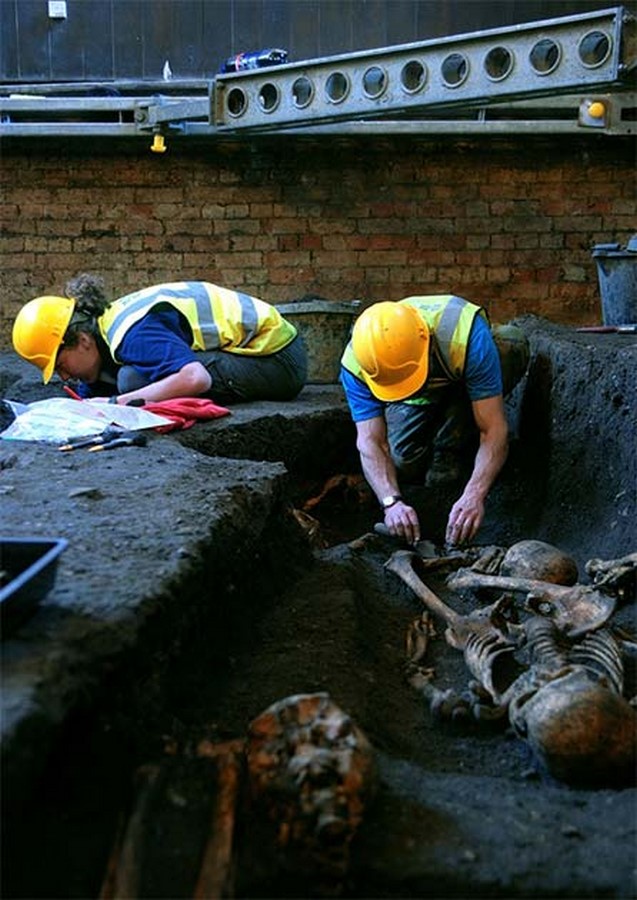A collaborative effort by archaeologists from various universities in England has shed light on the lives of over 400 individuals buried in a medieval cemetery linked to St. John the Evangelist Hospital in Cambridge. This comprehensive study has unraveled the workings of what can be considered a medieval social benefit system that provided support for the impoverished and infirm over centuries.

Origins of St. John the Evangelist Hospital
Established in 1195 by the church, St. John the Evangelist Hospital aimed to offer housing and medical aid to the destitute and ailing. Despite its modest size, housing only a small number of inmates along with clerics and lay servants, the institution operated for centuries until the construction of new facilities at St. John’s College in 1511.
Unveiling Lives Through Bones
The skeletal remains excavated from the cemetery have revealed insights into the lives of those who sought refuge within the hospital’s walls. Through a multidisciplinary approach involving physical examination, isotopic analysis, and genetic studies, researchers reconstructed the physical and social conditions of the individuals buried there.

Selection Criteria and Social Dynamics
The demand for admittance to St. John the Evangelist Hospital was high, reflecting the widespread poverty and infirmity in medieval Cambridge. Selection criteria likely encompassed factors such as material need, local politics, and spiritual merit. In return for shelter, inmates were expected to pray for the souls of the hospital’s benefactors.
Insights from Skeletal Analysis
Comparative analysis of skeletal remains from the cemetery revealed significant findings. While inmates exhibited signs of malnutrition and childhood disease, they experienced lower rates of physical trauma, suggesting protection while under the hospital’s care. Children buried there were notably small, possibly orphans.

Diverse Residents
In addition to the impoverished, a few skeletons suggested affiliation with scholars from the University of Cambridge, indicating a range of backgrounds among residents. Some individuals, once prosperous, experienced a decline in health and fortune in later life, exemplifying the challenges faced by the “shame-faced poor.”
Nuanced Care for Various Needs
The hospital’s inclusive approach aimed to cater to individuals from different walks of life, serving as a testament to its diverse benefactors and their motivations. This multifaceted care strategy appealed to a broad spectrum of donors, highlighting the hospital’s significance within the community.
Illuminating Medieval Lives
Through meticulous analysis and reconstruction, this study offers a glimpse into the lives of medieval Cambridge residents who sought refuge and support from St. John the Evangelist Hospital. The launch of a website featuring detailed biographies further enriches our understanding of these individuals and their stories.
In conclusion, the medieval social benefit system embodied by St. John the Evangelist Hospital provided essential care and refuge for the impoverished and infirm, showcasing the complex dynamics of charity and social support in medieval society.













Comments